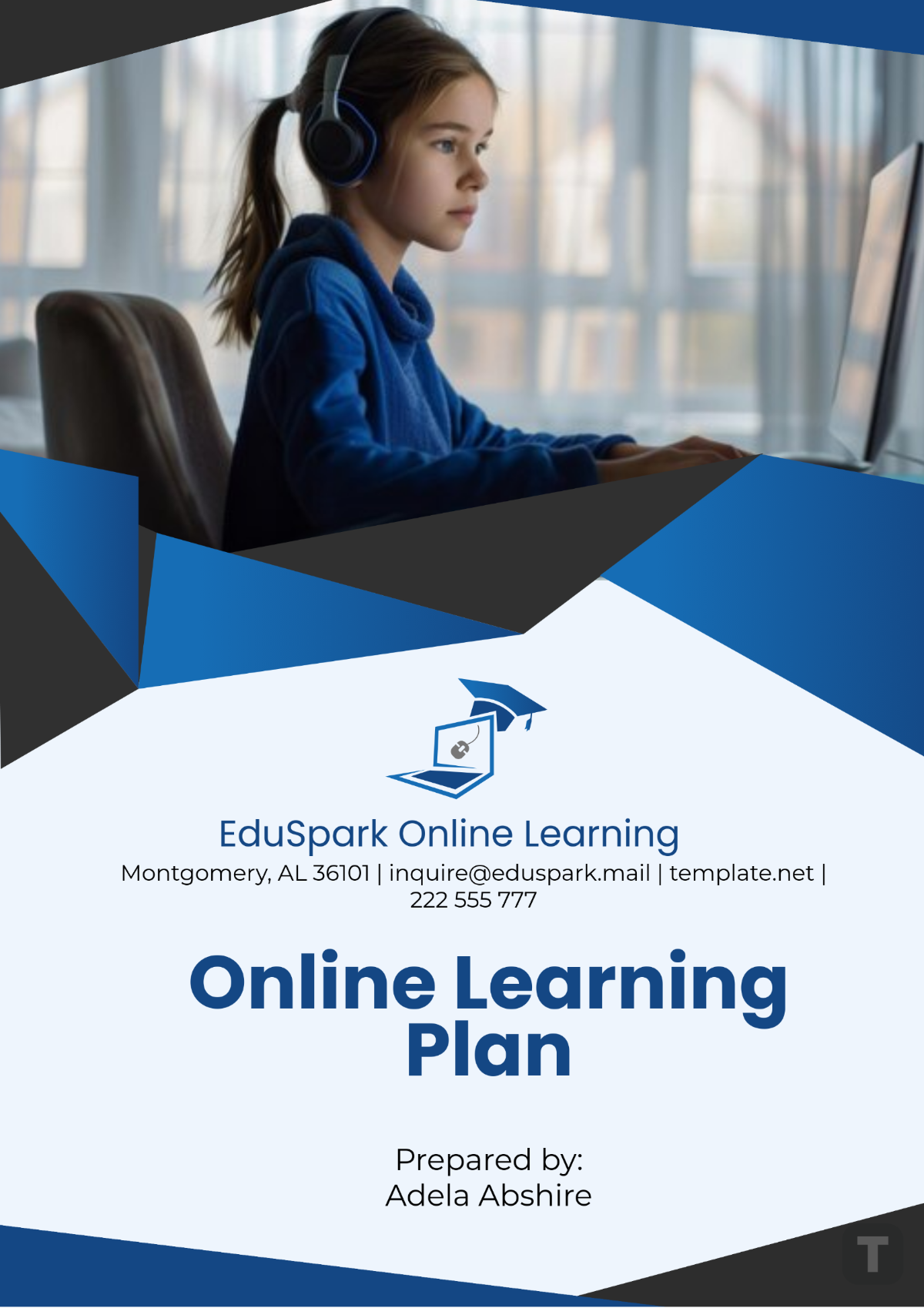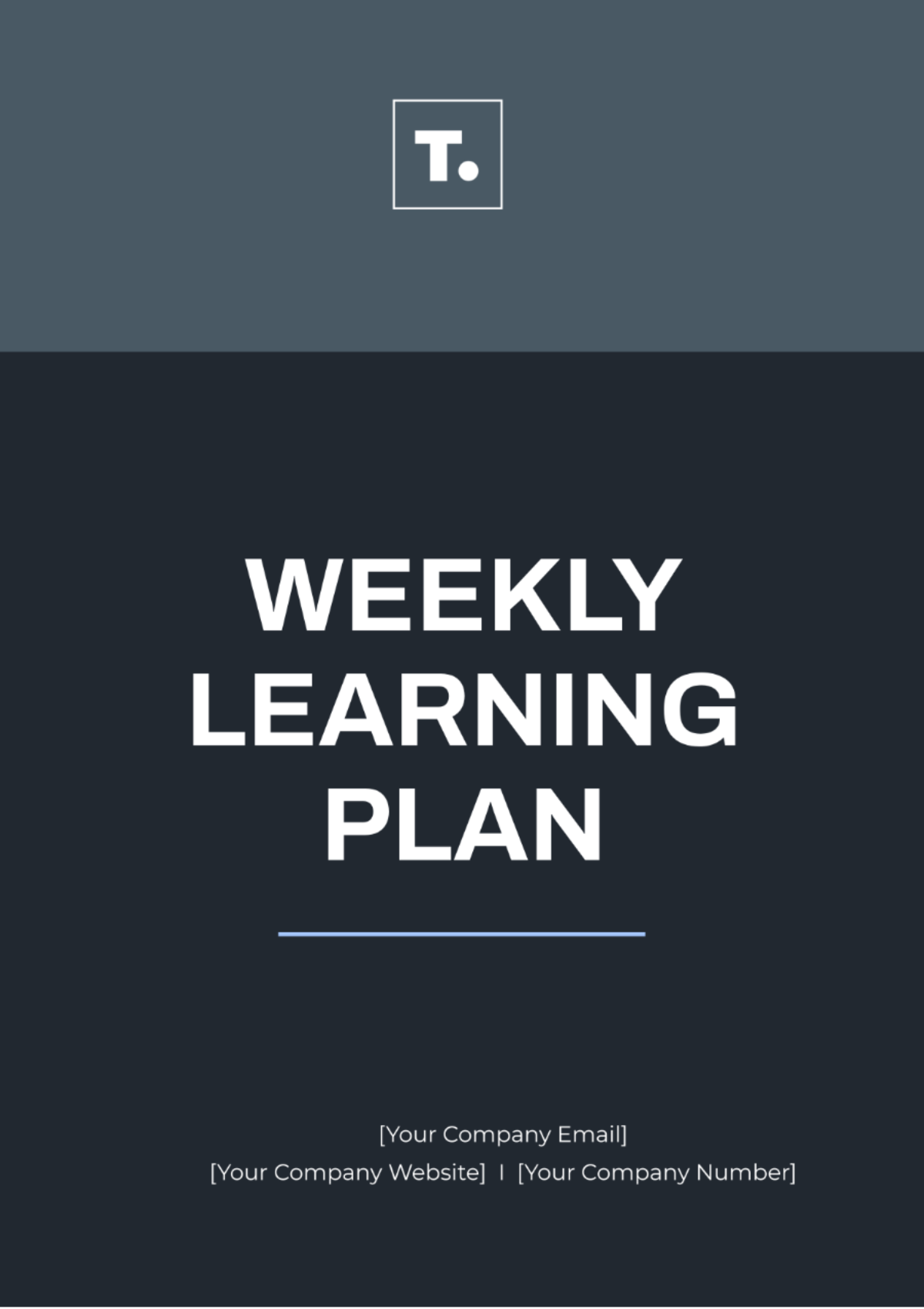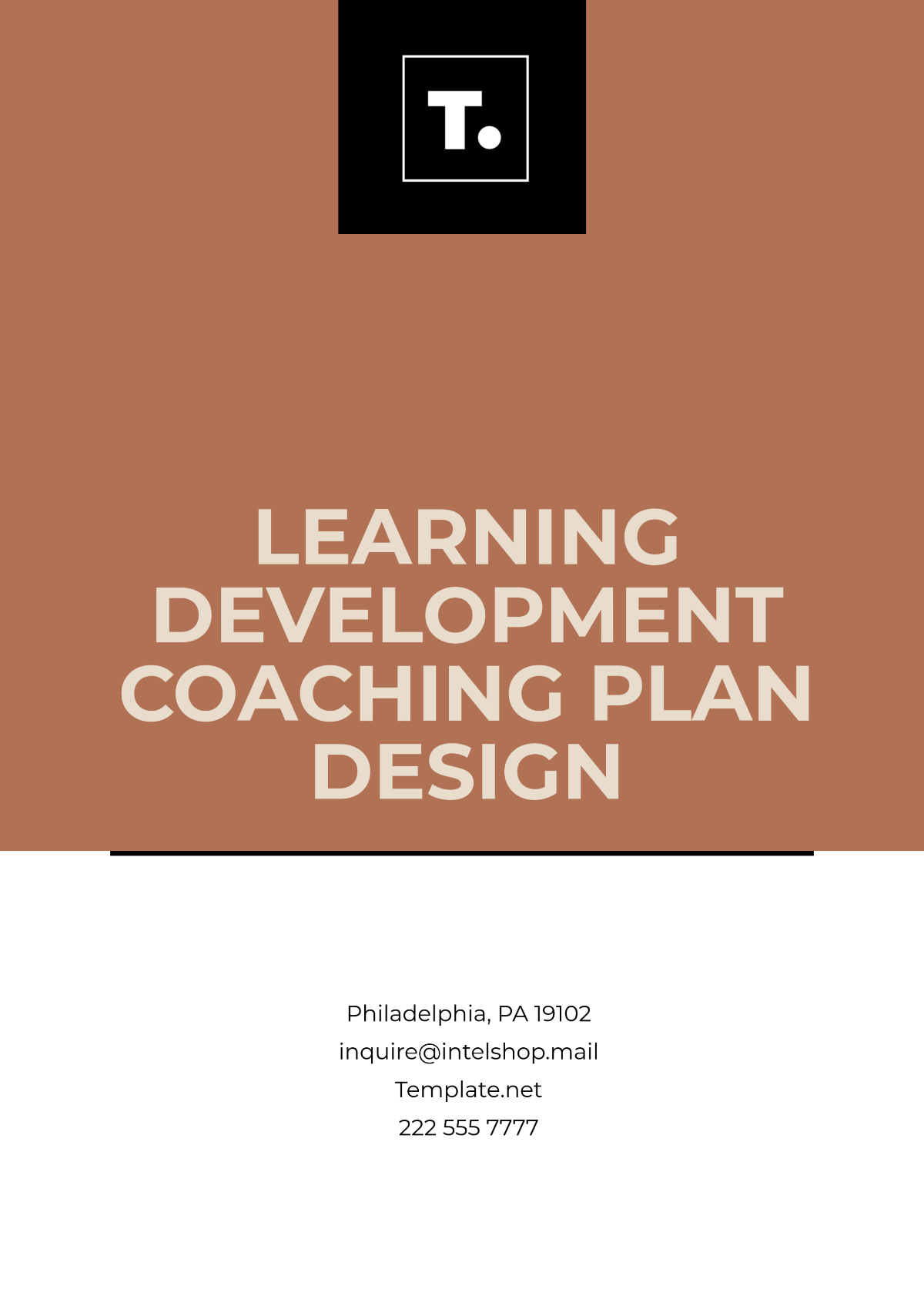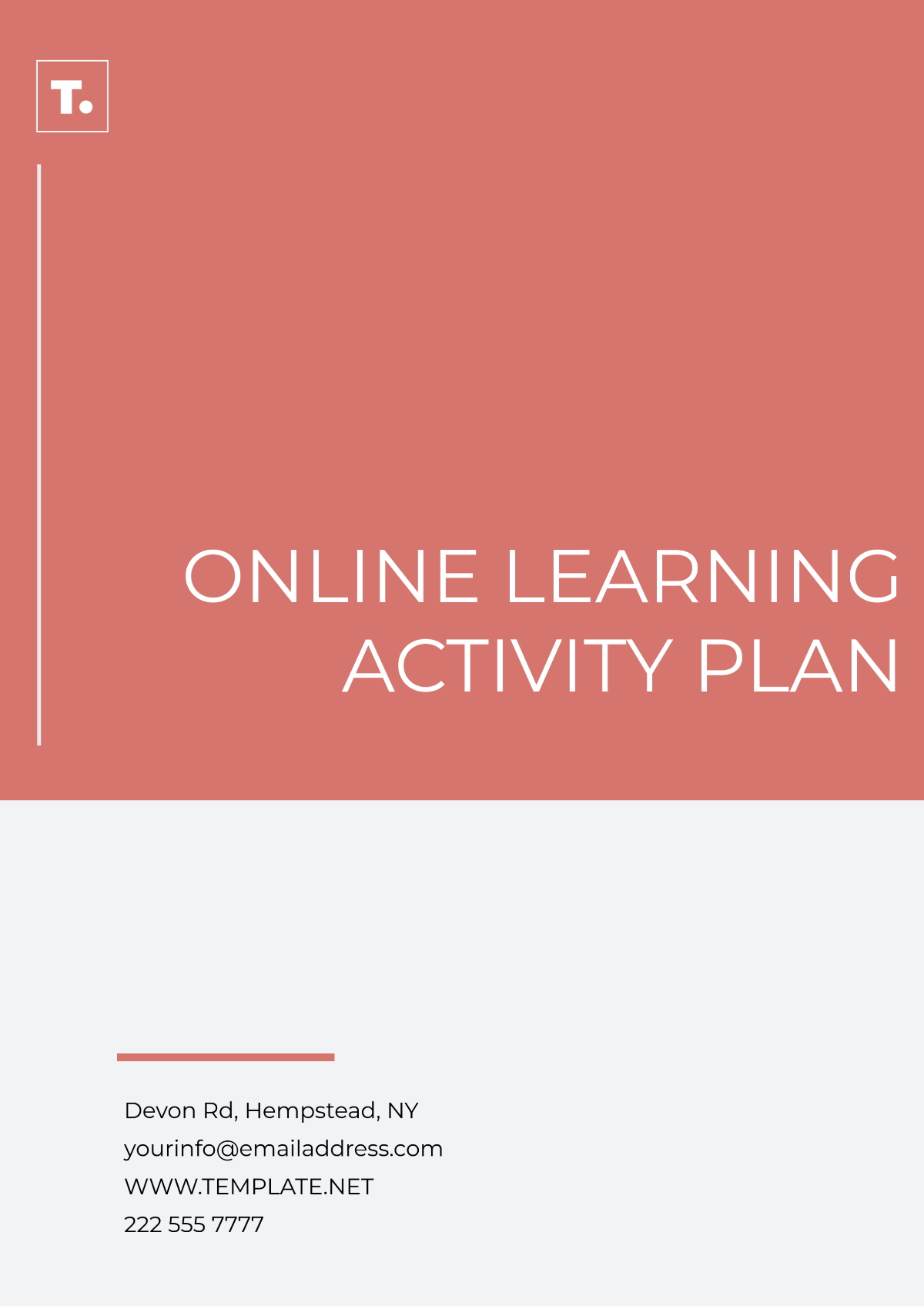Free Online Learning Plan

- 100% Customizable, free editor
- Access 1 Million+ Templates, photo’s & graphics
- Download or share as a template
- Click and replace photos, graphics, text, backgrounds
- Resize, crop, AI write & more
- Access advanced editor
Outline your educational objectives with this Online Learning Plan Template from Template.net. This customizable and editable template provides a structured framework for detailing course goals, content, timelines, and assessment methods. Fully editable in our Ai Editor Tool, you can tailor each section to fit your specific teaching needs, ensuring a well-organized and effective online learning experience.
You may also like
- Finance Plan
- Construction Plan
- Sales Plan
- Development Plan
- Career Plan
- Budget Plan
- HR Plan
- Education Plan
- Transition Plan
- Work Plan
- Training Plan
- Communication Plan
- Operation Plan
- Health And Safety Plan
- Strategy Plan
- Professional Development Plan
- Advertising Plan
- Risk Management Plan
- Restaurant Plan
- School Plan
- Nursing Home Patient Care Plan
- Nursing Care Plan
- Plan Event
- Startup Plan
- Social Media Plan
- Staffing Plan
- Annual Plan
- Content Plan
- Payment Plan
- Implementation Plan
- Hotel Plan
- Workout Plan
- Accounting Plan
- Campaign Plan
- Essay Plan
- 30 60 90 Day Plan
- Research Plan
- Recruitment Plan
- 90 Day Plan
- Quarterly Plan
- Emergency Plan
- 5 Year Plan
- Gym Plan
- Personal Plan
- IT and Software Plan
- Treatment Plan
- Real Estate Plan
- Law Firm Plan
- Healthcare Plan
- Improvement Plan
- Media Plan
- 5 Year Business Plan
- Learning Plan
- Marketing Campaign Plan
- Travel Agency Plan
- Cleaning Services Plan
- Interior Design Plan
- Performance Plan
- PR Plan
- Birth Plan
- Life Plan
- SEO Plan
- Disaster Recovery Plan
- Continuity Plan
- Launch Plan
- Legal Plan
- Behavior Plan
- Performance Improvement Plan
- Salon Plan
- Security Plan
- Security Management Plan
- Employee Development Plan
- Quality Plan
- Service Improvement Plan
- Growth Plan
- Incident Response Plan
- Basketball Plan
- Emergency Action Plan
- Product Launch Plan
- Spa Plan
- Employee Training Plan
- Data Analysis Plan
- Employee Action Plan
- Territory Plan
- Audit Plan
- Classroom Plan
- Activity Plan
- Parenting Plan
- Care Plan
- Project Execution Plan
- Exercise Plan
- Internship Plan
- Software Development Plan
- Continuous Improvement Plan
- Leave Plan
- 90 Day Sales Plan
- Advertising Agency Plan
- Employee Transition Plan
- Smart Action Plan
- Workplace Safety Plan
- Behavior Change Plan
- Contingency Plan
- Continuity of Operations Plan
- Health Plan
- Quality Control Plan
- Self Plan
- Sports Development Plan
- Change Management Plan
- Ecommerce Plan
- Personal Financial Plan
- Process Improvement Plan
- 30-60-90 Day Sales Plan
- Crisis Management Plan
- Engagement Plan
- Execution Plan
- Pandemic Plan
- Quality Assurance Plan
- Service Continuity Plan
- Agile Project Plan
- Fundraising Plan
- Job Transition Plan
- Asset Maintenance Plan
- Maintenance Plan
- Software Test Plan
- Staff Training and Development Plan
- 3 Year Plan
- Brand Activation Plan
- Release Plan
- Resource Plan
- Risk Mitigation Plan
- Teacher Plan
- 30 60 90 Day Plan for New Manager
- Food Safety Plan
- Food Truck Plan
- Hiring Plan
- Quality Management Plan
- Wellness Plan
- Behavior Intervention Plan
- Bonus Plan
- Investment Plan
- Maternity Leave Plan
- Pandemic Response Plan
- Succession Planning
- Coaching Plan
- Configuration Management Plan
- Remote Work Plan
- Self Care Plan
- Teaching Plan
- 100-Day Plan
- HACCP Plan
- Student Plan
- Sustainability Plan
- 30 60 90 Day Plan for Interview
- Access Plan
- Site Specific Safety Plan
Online Learning Plan
I. Introduction to Online Learning
Online learning has revolutionized education by making it more flexible, accessible, and inclusive. It provides learners with the opportunity to engage with content at their own pace, from any location, making it especially valuable for individuals balancing work, family, or other commitments. In a rapidly changing world, online education offers an adaptable approach to gaining new skills and knowledge, enabling continuous learning without the constraints of traditional classrooms. [Your Company Name] recognizes the power of this mode of education and is committed to creating an effective, learner-centered online environment that meets diverse needs.
At [Your Company Name], our online learning programs are designed to enhance engagement through interactive modules, multimedia content, and real-world applications. By leveraging technology and instructional design best practices, we ensure that learners not only grasp concepts but also apply them in meaningful ways. Our strategy also aligns with US educational standards and ensures compliance with laws such as the Americans with Disabilities Act (ADA) to guarantee accessibility for all learners. This plan outlines the key elements necessary to build a robust online learning experience, focusing on student outcomes, instructional quality, and the seamless integration of technology to create an immersive and effective learning journey.
II. Setting Learning Objectives
Clear learning objectives are crucial for guiding the learning process and assessing outcomes.
A. Define Specific Goals
Identify key skills and knowledge areas to be acquired.
Set measurable and achievable targets.
B. Align with Curriculum Standards
Ensure objectives align with educational standards and requirements.
Include references to standardized curricula where applicable.
III. Selecting Online Learning Platforms
Choosing the right platform is crucial to delivering a seamless and engaging online learning experience. The platform must align with your organization's goals and learner needs, offering the right blend of content, features, and usability. Below are some common platform options and key considerations for evaluation.
A. Platform Options
Platform | Features | Suitability |
|---|---|---|
Coursera | Courses from top universities, certificates | Higher education, professional development |
Udemy | Wide range of subjects, self-paced | General education, skill-specific learning |
Khan Academy | Free resources, K-12 focus | Supplementary education, K-12 support |
B. Evaluating Platform Effectiveness
Assess user reviews and feedback to gauge the overall experience and satisfaction.
Consider the platform’s user interface, ease of navigation, and accessibility features, ensuring it meets ADA compliance standards for learners with disabilities.
IV. Designing a Learning Pathway
A well-structured learning pathway is essential to guide learners through the content in a logical, effective, and engaging manner. It helps learners progress with clarity, ensuring they build knowledge incrementally while staying motivated. At [Your Company Name], we prioritize creating pathways that not only organize content but also enhance the overall learning experience by blending diverse instructional strategies and resources.
A. Organize Content Sequentially
A thoughtfully arranged sequence of content is essential for successful learning. By dividing the material into smaller, manageable segments and setting clear milestones, learners can monitor their progress and gradually deepen their understanding of the subject matter.
Develop a step-by-step approach to learning material.
Employ milestones to track progress.
B. Incorporate Various Teaching Methods
Utilizing a variety of teaching methods enhances learner engagement and accommodates diverse learning styles. This approach fosters deeper understanding and retention, making the learning experience more interactive and enjoyable.
Use a mix of lectures, readings, and interactive activities.
Integrate multimedia resources to enhance engagement.
V. Assessing Learning Outcomes
Assessing learning outcomes is crucial for evaluating the effectiveness of the online learning strategy. Through structured assessment methods, educators can gain insights into learners' progress, identify areas for improvement, and refine instructional approaches to enhance the overall educational experience.
A. Continuous Assessments
Use quizzes and assignments for regular feedback: Implementing frequent quizzes and assignments provides learners with timely feedback on their understanding of the material. This ongoing evaluation helps identify knowledge gaps and reinforces learning through immediate application of concepts.
Encourage reflection and self-assessment: Prompting learners to reflect on their progress and assess their own understanding fosters a sense of ownership over their learning journey. Self-assessment tools, such as reflective journals or checklists, can enhance critical thinking and self-awareness.
B. Final Evaluation
Design comprehensive exams or projects to evaluate overall learning: At the conclusion of the learning pathway, comprehensive assessments—such as exams, capstone projects, or presentations—can effectively measure learners' overall grasp of the content and their ability to apply knowledge in practical scenarios.
Analyze results to improve future learning plans: After conducting final evaluations, it’s essential to analyze the results to identify trends and patterns in learner performance. This data-driven approach allows for the continuous improvement of learning strategies, ensuring they remain effective and relevant for future cohorts.
VI. Encouraging Learner Engagement
Fostering learner engagement is essential for achieving success and ensuring high retention rates in online education. Engaged learners are more likely to participate actively, comprehend the material, and apply their knowledge effectively. At [Your Company Name], we emphasize strategies that promote interactivity, collaboration, and consistent support to enhance the learning experience.
A. Interactive Elements
Incorporate discussion forums and collaborative projects: Creating discussion forums and encouraging collaborative projects fosters a sense of community among learners. These platforms allow for the exchange of ideas, peer-to-peer learning, and the development of critical thinking skills through constructive dialogue and teamwork.
Use gamification elements to motivate learners: Integrating gamification into the learning experience can significantly boost motivation and engagement. By incorporating elements such as badges, leaderboards, and rewards, learners are encouraged to actively participate and complete tasks, making the learning process more enjoyable and stimulating.
B. Support and Feedback
Provide timely feedback on assignments and quizzes: Offering prompt feedback on assignments and quizzes is crucial for guiding learners on their progress and areas for improvement. This responsiveness helps maintain motivation and encourages continuous learning by allowing students to adjust their study strategies accordingly.
Offer support through tutors or mentors: Providing access to tutors or mentors creates additional layers of support for learners. These individuals can offer personalized guidance, answer questions, and help clarify difficult concepts, contributing to a more supportive and effective learning environment.



